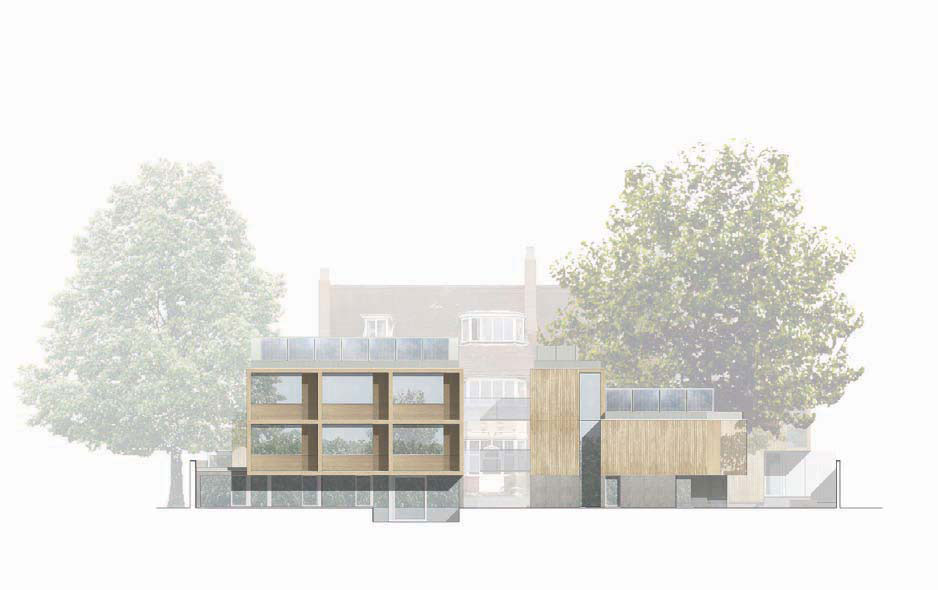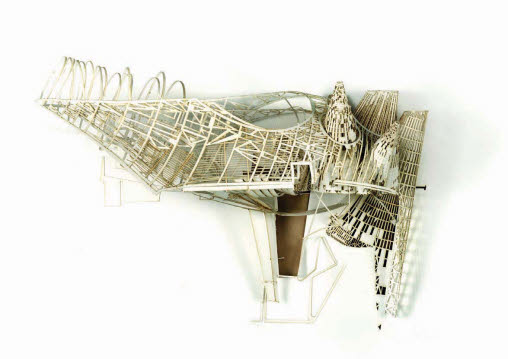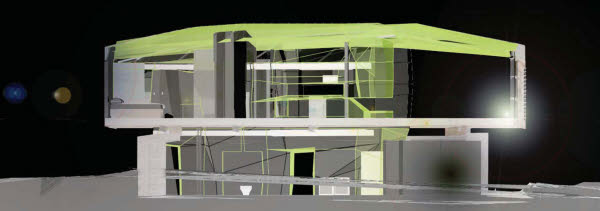Case Studies: Sections and elevations


1
1. The first sectional drawings featured above are by the London-based architect Philip Meadowcroft. Both are rapidly drawn sketches, direct expressions of thought translated into fleeting lines on paper. In the first pencil drawing it is remarkable how such a minimal group of lines so powerfully describes a sectional strategy. It portrays a stepped landscape, with a building form cut into it. A garden, framed by a dark wall (possibly a hedge), addresses a walled garden. There is little more than an essential set of sectional ideas that describes the verticality of a garden room and the light and materiality of a landscape setting.
2
2. Architects Buschow Henley have developed a photographic etching technique for printing CAD images as etchings using an aquatint process. The images produced have a beautiful, soft quality otherwise unattainable by straightforward plotting.

3
3. Equally sensitive is the elevational section for Chetham’s School of Music, Manchester, by the architects Stephenson Bell. These drawings are work-in-progress, but illustrate a stage in a useful design cycle. Production started with the combination of developmental sketches and Microstation drawings in order to develop the three-dimensional massing and proportions. The drawings were then imported into Photoshop, where they were tested in terms of materiality and light and shade.

4
4. A section elevation by Hodder Associates of their proposal for St. Catherine’s College, Oxford. It successfully represents the building in its context by combining a simple line section with Photoshop collage. The effectiveness of such drawings depends on the use of filters and masks to tone down photographic context.


5
5. Sara Shafiei and Ben Cowd (Saraben Studio). Magician’s Theater, National Botanical Gardens, Rome. Elevational and sectional studies. Media: tracing paper/hand-drawing.


6
6. The sectional perspectives of Archi-Tectonics’ Vestry Street residential infill project, situated in New York’s Tribeca district, show how the section can be developed as a key tool to express specific ideas about a project. The form of the project was generated by a response to the varying building heights along the street. It was articulated as an overlapping of suspended and cantilevering volumes, here cleverly portrayed through a sequence of elevational perspectives that show how the floor plate, which folds in section, forms the elevation as a pattern of solid and transparent (pixilated) planes.


7b
7a, b. Ian Simpson’s early developmental drawing is equally inventive. It shows an unfolded cladding elevation for a tower project, ovoid in plan. The original elevations drawn in Vectorworks and the “unfolding” of the façades were calculated and constructed manually: at this stage (2004) Vectorworks lacked the ability to automatically “unfold” the geometry of the cladding skin. Basic colors were also added in Vectorworks, with post-production color and reflections added in Photoshop.

